One of my favorite topics to discuss involving Commander is the hidden gems that are scattered across Magic’s history. It’s not a topic that sustains itself beyond an occasional article once or twice a year, and it’s been exactly 2 years to the week since I last covered this topic. In addition to all the cards that have slipped into obscurity over the last two years, I have been looking through Commander sets celebrating their tenth anniversary this year—cards that were designed specifically with the format in mind that have been lost to time by the player base.
Today I will be casting a fairly wide net and looking at cards from the original Commander set all the way up to Commander 2018, in an effort to find cards that I feel have fallen by the wayside, but have uses either in niche situations or as real workhorses.
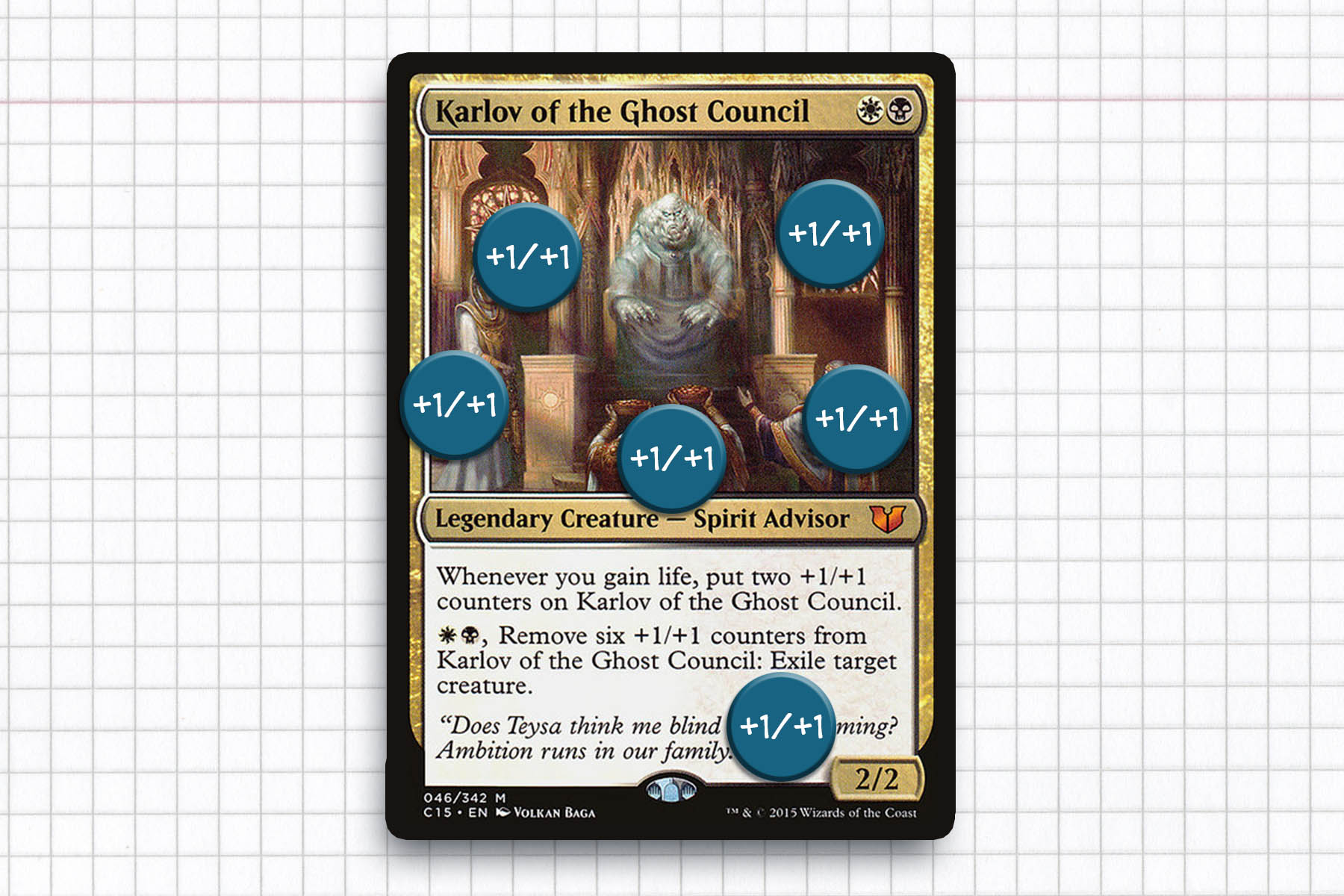
Karlov of the Ghost Council
Starting off with the selection that I think is much more valuable in the other 99 than as a general, we have Karlov of the Ghost Council. While not as universal as other cards on this list, in a deck that is already gaining life, Karlov is great for its ability to both attack and act as removal.
Karlov comes down early and can make an impact over the course of the game. If you have the means to grant him lifelink, he can take over games. In an Aristocrats deck with any combination of Blood Artist, Witch’s Oven, and Zulaport Cutthroat, you may be easily gaining six or more +1/+1 counters in a turn cycle. And if you find yourself in a deck with Cathars’ Crusade or True Conviction, you may also desire the services offered by Karlov.
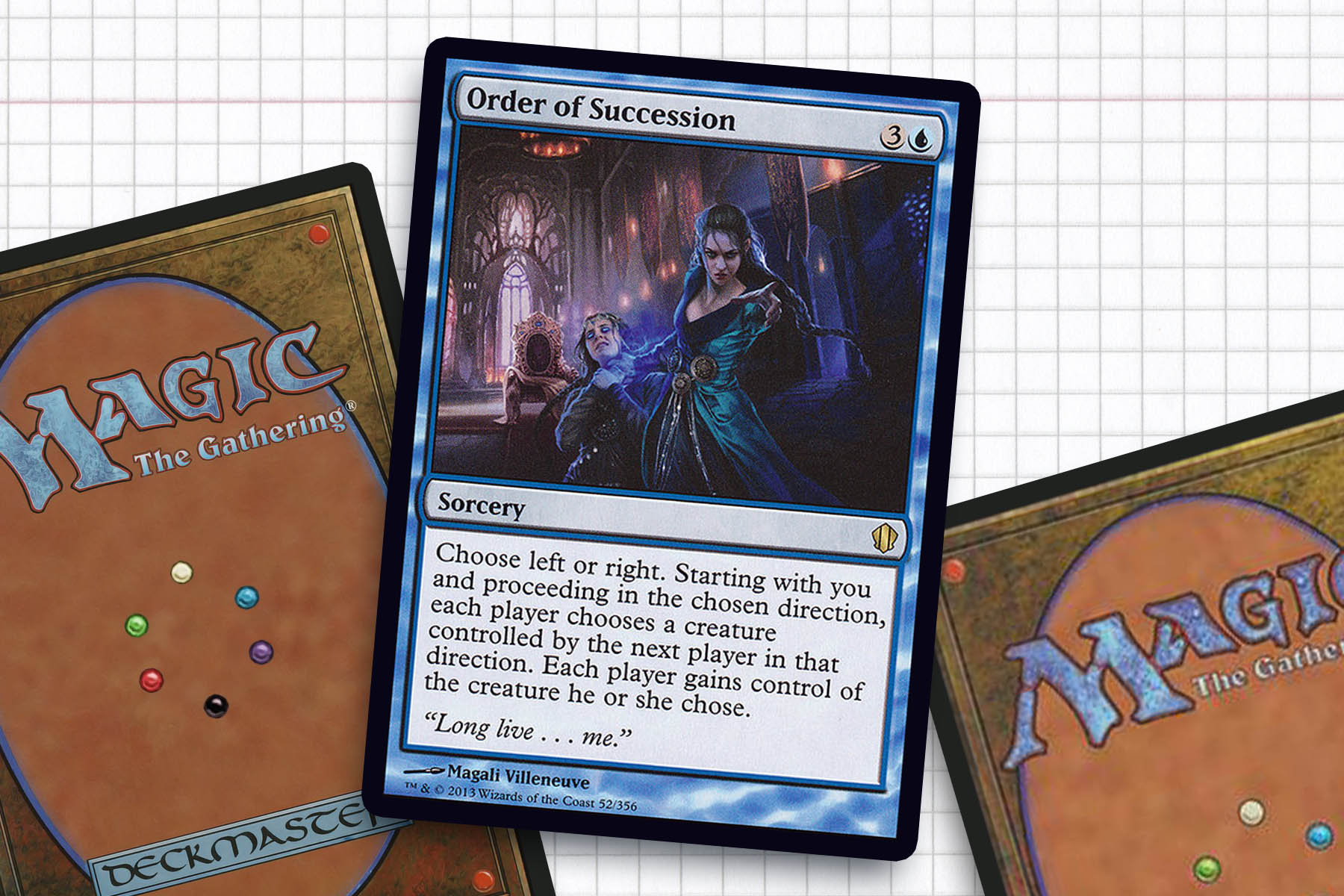
Order of Succession
My next card may be a harder sell, because Order of Succession is a card that requires a bit of finesse to make viable. In my Aminatou, the Fateshifter deck, this has proven to be a hidden gem. As so many creatures enter the battlefield and then become virtual vanilla creatures, they provide a nice forced option for my opponents to select when resolving Order of Succession. This also leaves us with the option of using the minus one ability on Aminatou to return any creature that we may want back from this exchange.
An additional edge to this card is that it forces politics that the caster can use to their advantage. Most players play with some degree of agency, meaning that even if you are not the one taking a critical creature the unofficial archenemy controls, someone else is. These two players now have a tension between them, hopefully taken attention away from you or a momentary ally. Additionally, there are creatures like Leonin Arbiter or Spirit of the Labyrinth where the controller doesn’t matter, because the effect is always global. A keen observer should be able use a card like Order of Succession at advantageous moments.
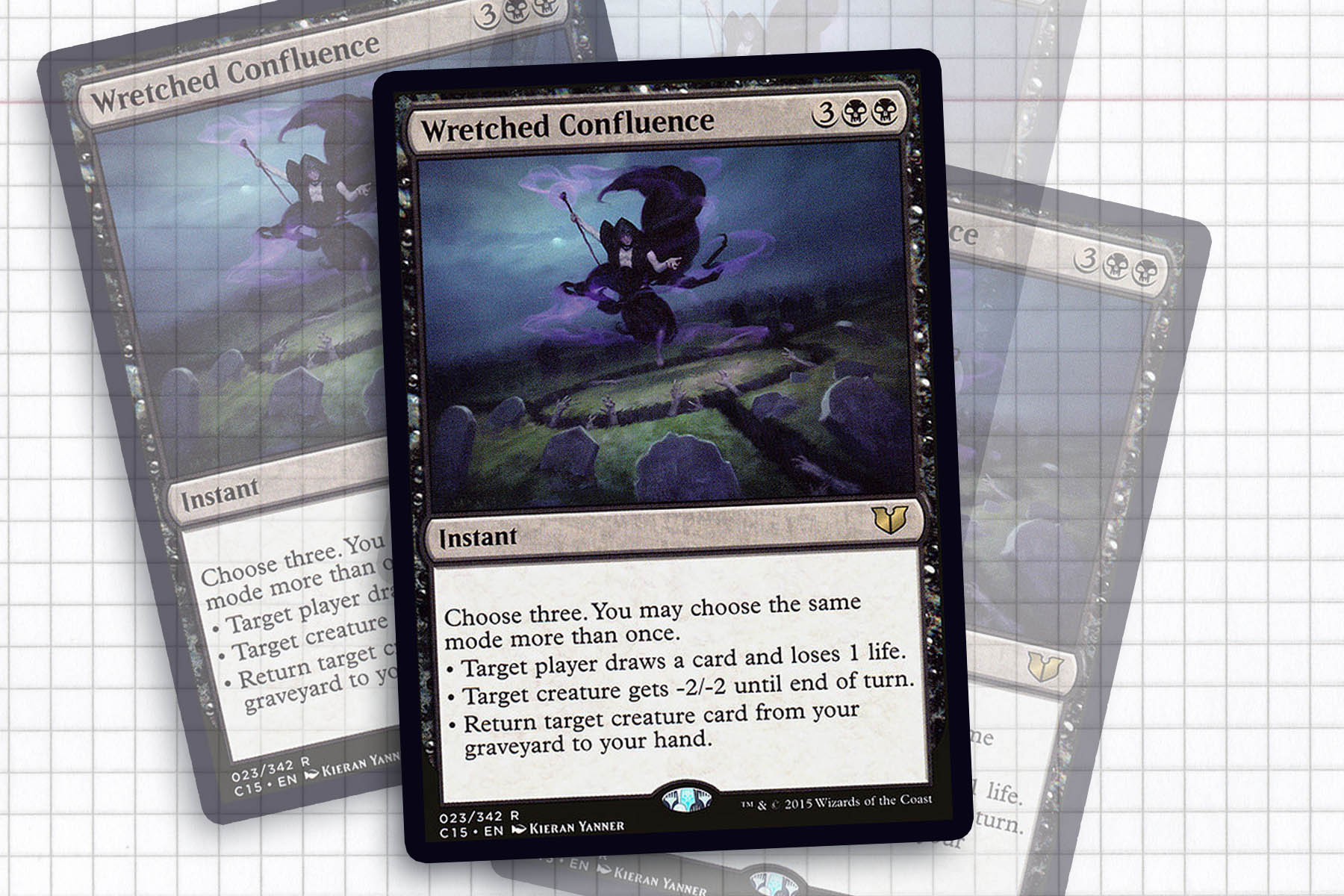
Wretched Confluence
Outshone by other pieces of the cycle, like Mystic Confluence and Fiery Confluence, our next card is an instant that is capable of representing varying levels of a recursion spell, removal, or card draw all in on card. The problem:Wretched Confluence is just not specific enough in its applications. By extension, it doesn’t float to the top of a list of cards until you realize it’s just the kind of card that would be nice to have. Personally, it’s always proven to be a good card when I’ve tuned a deck and now have some available spots, as it’s bound to do something in a deck playing Swamps.
One use of it that has stuck with me is how political it can be; letting a momentary ally get the card they searched out with Vampiric Tutor, while removing a few blockers. Recover from a Wrath of God and draw a card. Or used to take out the Voltron general you promised wouldn’t survive an attack in your direction. Maybe the biggest boon to its place at a table is that it sees less play and isn’t something that opponents will plan around—like an anti-Cryptic Command.
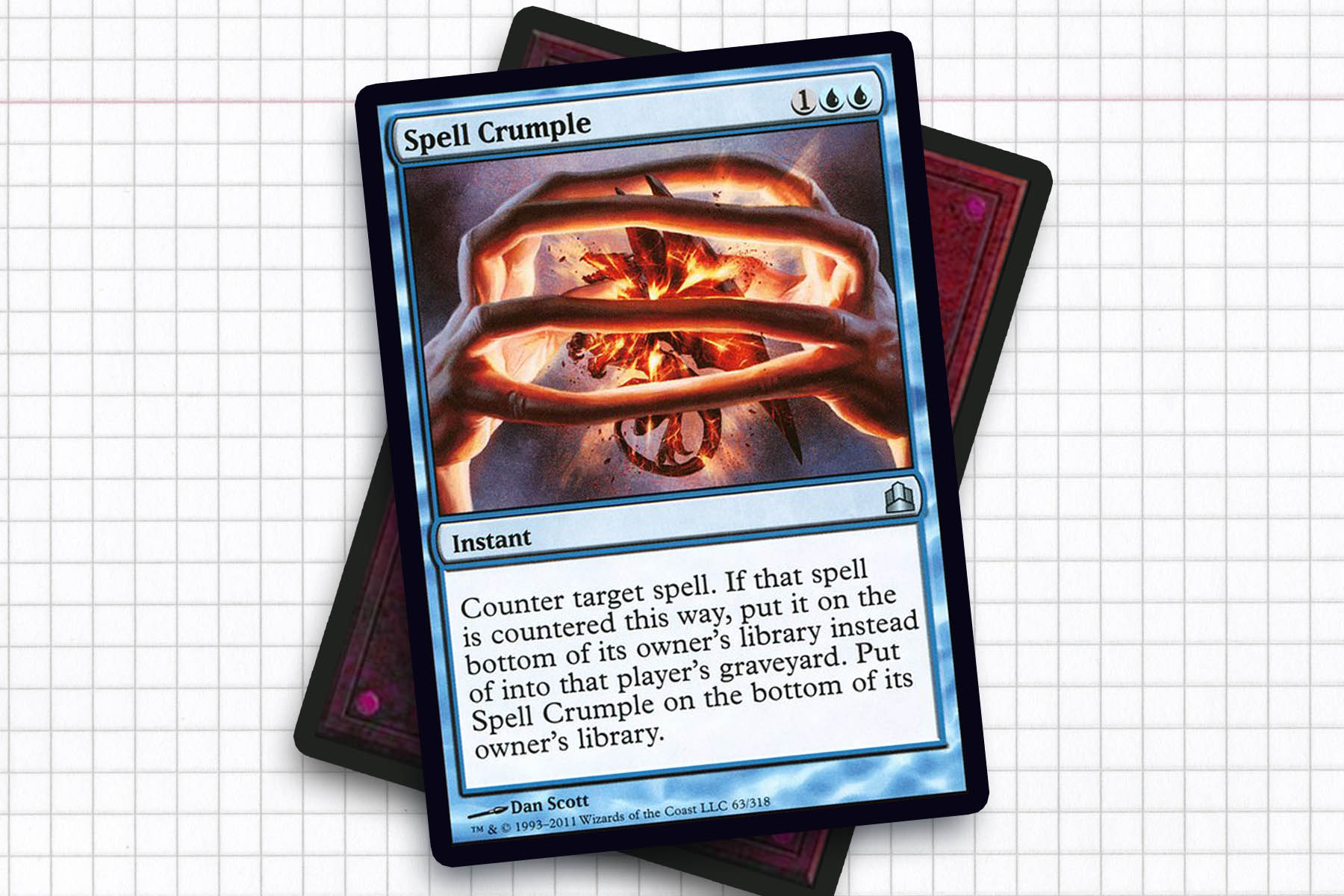
Spell Crumple
One of the biggest changes that I’ve witnessed in my time playing Commander is the change of the tuck rule. For the unaware, there was a point in time when a general could be shuffled into its owner’s library, making it a potent form of removal for a general. Eventually the Rules Committee decided that people should be able to play with their generals, as that is what you often build your deck around the most. I’m of two minds when it comes to this. I absolutely support the idea that people should be able to play with their general, but I think players should be prepared for the fact that they may not always have access to the general.
One of the ripple effects of this rules change was that cards like Spell Crumple immediately saw less play. While I understand in the micro why this decision was made by a lot of players, Spell Crumple is the kind of answer that you want in Commander, because not every gaming winning spell is someone’s general. Being able to put a problematic spell on the bottom of a library is often better than in a graveyard and might as well be exile. This added feature of the card makes it something that I believe people should be taking more advantage of, especially for only three mana.
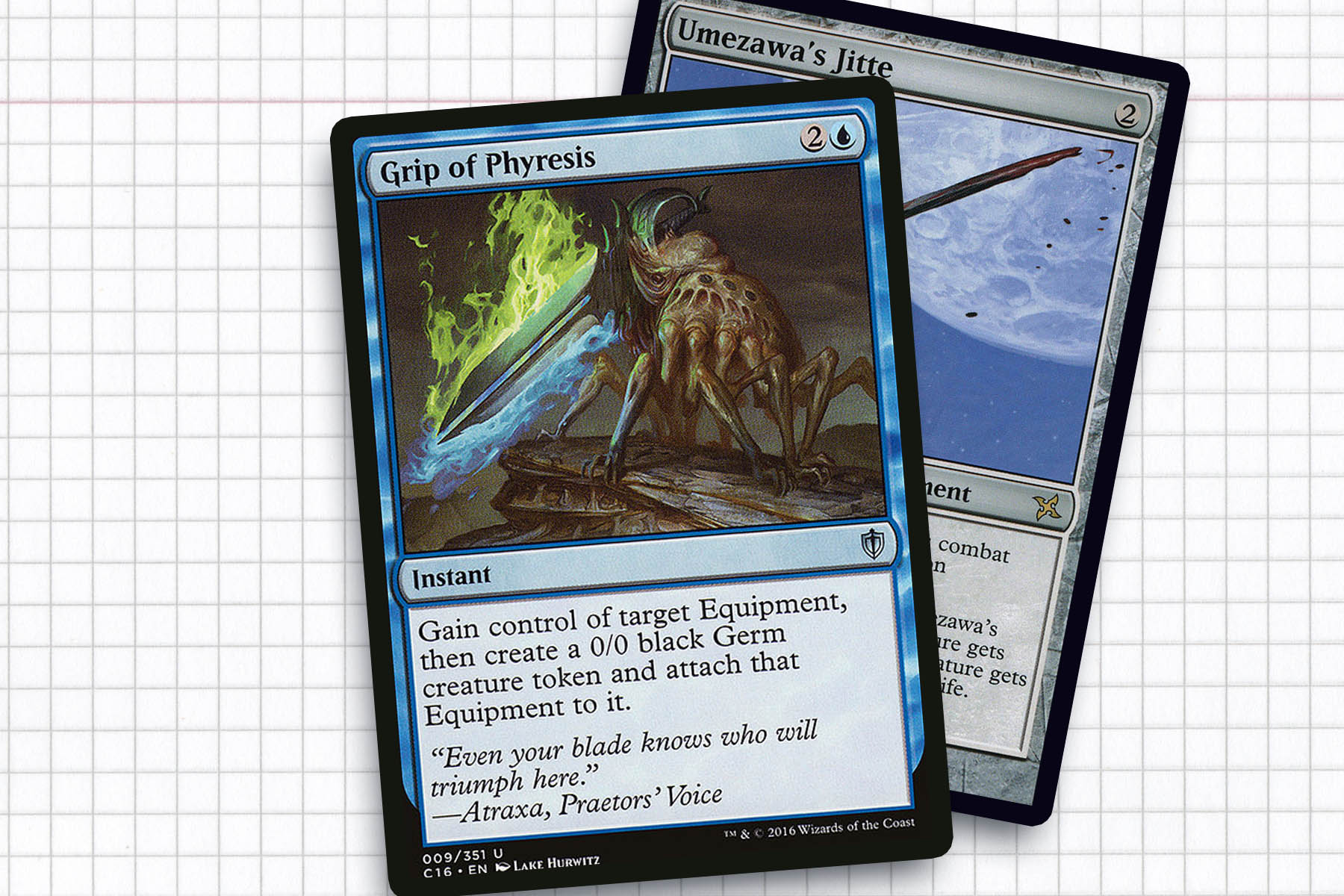
Grip of Phyresis
Something I often see while playing Commander is how equipment are granted a sort of “social shroud” while in play. They are hardly ever removed directly by something akin to Shatter and more often taken out as a byproduct of an Austere Command. As such, I think people are overlooking an effect like Grip of Phyresis. As a slightly better Carry Away, this card can often grant you the ability to dismantle the plans of a Voltron deck, or at the very least expose a hexproof creature to removal.
In a metagame where equipment is going to play a part in just about every game, being able to use Grip of Phyresis to grab Batterskull or Colossus Hammer can be devastating for your opponent and laughable for you. As a bonus, I can also recommend Magnetic Theft for those moments when simply having control of an equipment until the end of the turn or even just the end of combat will be enough to turn the tide in your favor.
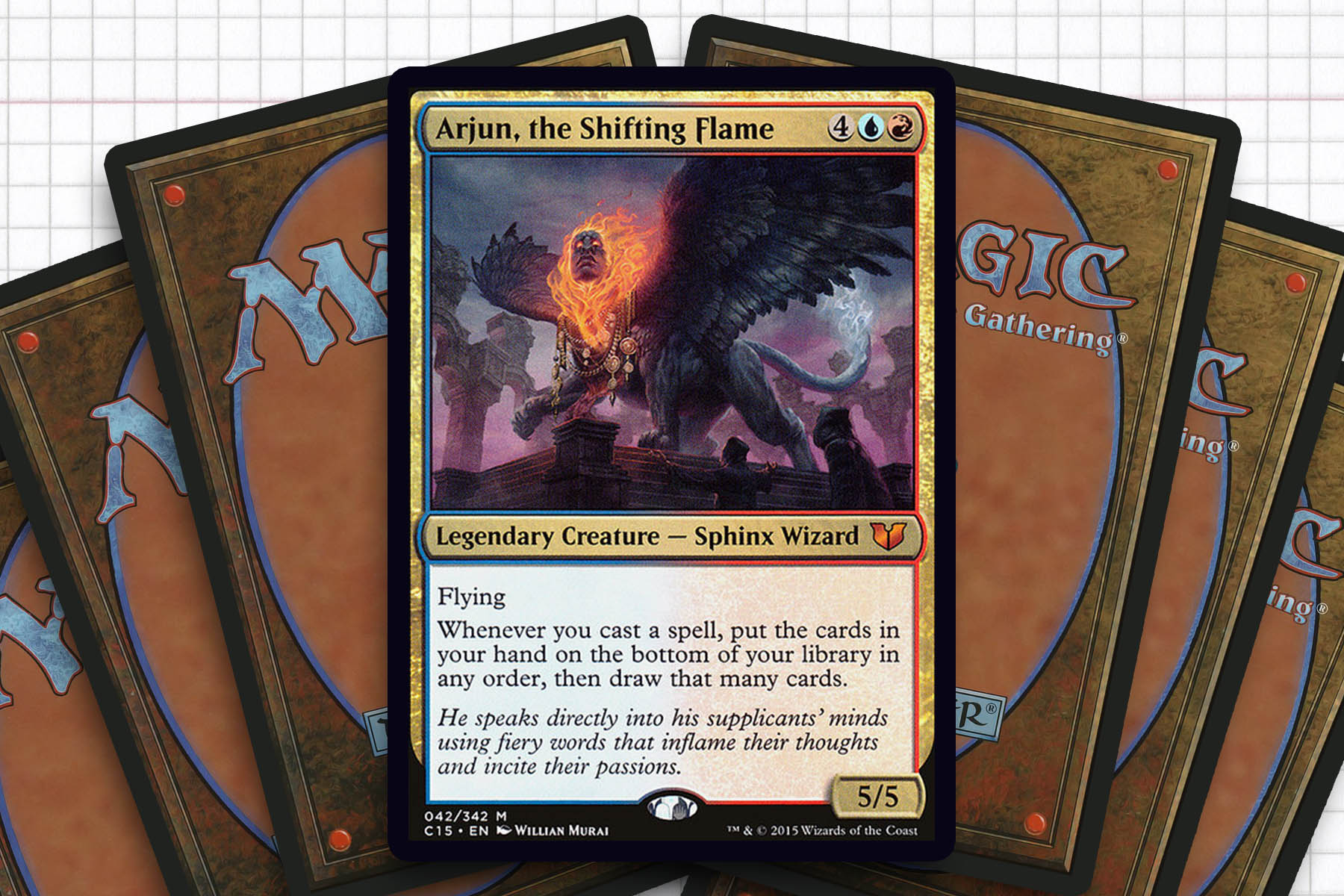
Arjun, the Shifting Flame
I have to admit, Arjun, the Shifting Flame might be my favorite deck I’ve built that I don’t still have assembled. It was just so much fun. Unfortunately overshadowed due to being in the deck headlined by Mizzix of the Izmagnus, Arjun was an early point of excitement for me, as I had always wanted to make Mindmoil something that could work in Commander. At the time of printing, compared to the then-popular Terferi’s Puzzle Box, Arjun allowed for you to at least plan out your turn during table rotation, before starting a chain and possibly drawing into just about anything.
The deck utilized phyrexian mana and cards that untapped lands, like Cloud of Faeries. But I have to wonder what the deck could do now, about two years after my version last saw play. Ominous Seas and Thundering Djinn certainly had not seen print yet. And I have to wonder if modal double faced cards that could be lands would add something, because how situational they can be while also being lands.
My favorite use of Arjun was a surprise mill deck, utilizing the constant draw and Sphinx’s Tutelage to remove anywhere from twelve to sixty cards from a single opponent in a turn. The deck itself can certainly be linear if you allow it to be, but I also think that as a spell slinger deck, it works well to divorce you from the idea of winning in the most perfected way possible, instead relaxing and seeing where the draw leads you.
Beyond the reveal of each of the decks’ generals, the massive highlight for me during preview season of a Commander set is the new cards being designed for the format. While not every one of them is a home run, it’s often entertaining to see what Wizards thought would lend themselves well to the social politics and slower games overall.
As the years pass and Commander and Magic Arena becomes more of a focus for Wizards of the Coast, I think it has become more likely than ever that cards in the Commander sets are being drowned out by cards entering the game through Standard-legal sets. More cards are built for best-of-one Magic, in the form of modal spells especially. This is why I think it’s all the more important to look at the cards we’ve lost along the way and see what needs the answer that weren’t something to consider three to ten years ago.
What hidden gem do you love? Let me know on Twitter!
Ryan Sainio is a Graphic Designer who writes about EDH and the EDH community. He has been playing Magic: the Gathering since 7th Edition in 2002 and values flavorful and fun gameplay over competitively optimized decks.

